Anise is known to us mainly as a condiment with a specific taste. Represents an annual herbaceous plant that is successfully cultivated, and in the wild is found in the warmer regions. Major growing areas are Asia, Europe, India, Chile, Japan and more.
Since ancient times, anise is used as a spice and a treatment in traditional medicine. Data on it is found in the writings of Dioscorides and Pliny the Elder. There is evidence that anise was used in Egypt in 1500 BC. Romans used aniseed-flavored cakes after taking heavy meals and it spread throughout Europe by the Roman legions.
Even the Bible mentions tithing of anise. In 1305 anise is listed by King Edward I as a taxable drug and merchants arriving in London paid tribute that agoes to the repair of London Bridge. Fruits of anise are known as Fructus Anisi.
In essence anise is an annual plant with 30-60 cm high stem. Inflorescence is a complex canopy with a 7-15 main beam at the base - no shell or only a piece of paper. The flowers are white and the fruits are 3-5 mm long, ovate to oblong-ovate. Anise blooms from June – July. Use fruits that are harvested before they mature. After taking, leave it to mature. The fruits are aromatic, with a sweetish taste. Dried fruits are stuck related to each other by two seeds, up to 5 mm long, 2-4 mm wide, attached to the stalks.

For Dakan Indians, where it is very rare, when they want to show a strong love for someone, they give him a handful of anise. The taste is sweet with a rather pleasant aroma. The seed oil contains mostly fat and protein and therefore has no flavor.
There is a difference between the 2 types of aniseed - plain anise (Pimpinella anisum L.) and star anise (Illicium verum). Anise is an annual herbaceous plant with cultural upright cylindrical stem of the family of celery and parsley - Umbelliferae (Apiaceae), while star anise is an evergreen tree with a height of 10 m and refers to the family Magnoliaceae.
Chemical composition and nutrients in aniseed
Anise is a plant from the family of cumin and fennel. The seeds of the herb are especially rich in essential oils and fats. Fruits contain polysaccharides, proteins account for 30% fatty oil, 2 3% (in some varieties up to 6%) of essential oil, anethole is the main component (80-90%). Furthermore to anethole, it also contains methyl chavicol, anicaldehid, aniscetone and anison acid.
Fruits contain 8-28% fatty oil, protein substances, sugars, mucilage, about 10% of mineral salts, and the like. In anise berries find fat - 10-30% choline, 20% protein, vitamin C (140 mg%), vitamin D (120 mg rutin-%), sugar, and a considerable amount of coumarins and micronutrients.
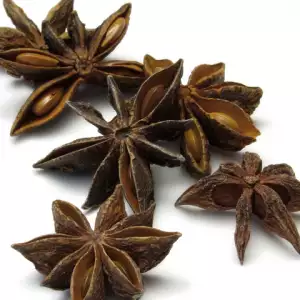
The fruits of anise and their liquid, almost colorless essential oil have the same flavor and taste as of star anise, which is evidence of a similar chemical composition of the oils.
The essential oil of anise also has substances that are not found in the essential oil extracted from star anise - aniscetone, cuminaldehyde, acetaldehyde, etc.. Anethole in the essential oil of anise is up to 90%. Particular to the oil is that it is extremely sensitive in terms of storage. If not stored properly, it fals into in dvuanetol, which is believed to have estrogenic properties.
Upon formation, dvuanetol essential oil becomes poisonous. Therefore oil of anise fruits should be kept in a cool dark place in tightly closed containers, for up to 2 years. Under the action of air and sunlight and heat, it gradually yields a dark and unpleasant taste.
Selecting and storing anise
You may find both whole and ground seeds of anise. You can keep the flavor of the spice for up to one year if you store it in an airtight jar, placed in a dry, dark and cool place.
Culinary use of aniseed
The unique aroma and taste of aniseed suggest its specific use in cooking. Often the leaves are used to flavor salads, and seeds - in confectionery for sprinkling on cakes, breads and more. The essential oil and anethole are used mainly for beverages, preferably liqueurs. Fruits are used for flavoring tea.
Anise is a strong spice and 1-2 g of fruit is used for 10 servings. Often, with anise we flavor sauces, meat dishes, small sweet or used to sprinkle on bread and other bakery products, or make a beverage ( aniseed brandy ). Fruits and spices are used in the preparation of sterilized fresh cucumbers. It is well combined with clove, nutmeg, ginger.
It is important to know that the seeds of anise quickly lose their flavor, so buy whole seeds, not ground. Store them in an airtight container in a dark room or cabinets. In a pinch, store anise seeds in paper envelopes.
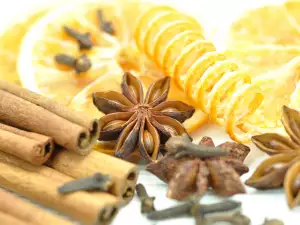
Health benefits of anise
Lot of health benefits can be derived from the use of anise. Over time, it has proven its purgative, diuretic, expectorant and soothing effect. Has the ability to remove intestinal cramps. Anti-inflammatory and drives gas from the intestines. It is believed that it can destroy the stones in the kidneys and bladder. There is estrogen action in the essential oil of anise that improves the function of the mammary glands and increases the milk of lactating women.
Anise is successfully used to treat bronchitis, colds, hoarseness, gastrointestinal colic, flatulence, kidney disease, high blood pressure, hiccups, shortages of milk, irregular menstruation.
It is good to know that in addition to beneficial effects on the voice of anise tea promotes secretion of bronchial mucus and nasal congestion. Decoction of the plant is effectively applied as an adjuvant in the treatment of angina, laryngitis, pharyngitis, chronic bronchitis, bronchial asthma.
The herb has analgesic effect. The drug is prescribed for colic in the stomach. The essential oil has a good effect on inflammation, sand and stones in the kidneys and bladder. Anise oil even enhances blood circulation to the skin. Dripped on paper, the essential oil drives away insects.
Decoction of anise
Since centuries ago, herbalists recommend a decoction of anise declined for lost voice. To do this, ½ cup aniseed should be poured with 500 ml of water. The herbal potion is left to simmer about 15 minutes. The liquid is then filtered, the seeds are discarded, and the tea is added ¼ cup copper and stirred to melt it. The tea is removed from the heat and one tablespoon brandy or vodka is added. A decoction of anise is taken 1 tbsp every half hour. By evening, your voice will recover fully. Throat pain will cease, you will completely restore the sound and timbre of your voice.
Infusions with anise
3-6 tsp crushed fruits of anise are poured with 400 ml of boiling water. The extract is filtered after 60 minutes and taken at 60-120 ml 3 times daily after meals. Anise oil can be used in 1-2 drops on a sugar cube 2-3 times daily.
Dangers of aniseed
In children, anise should be used very carefully with the direction of a specialist. Attentive to aniseed should be people with known allergy to the herb or essential oil of anise.

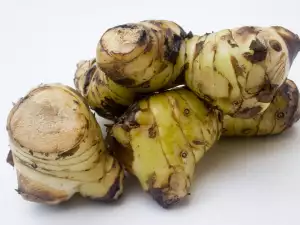

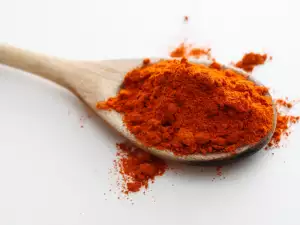
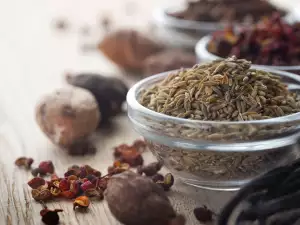
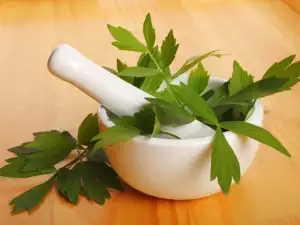

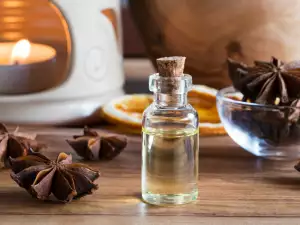
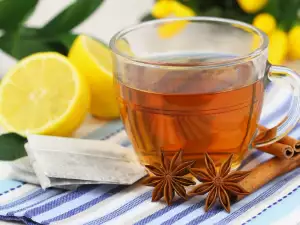

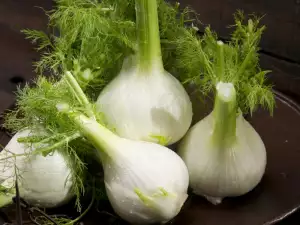


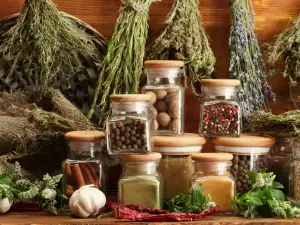





Comments